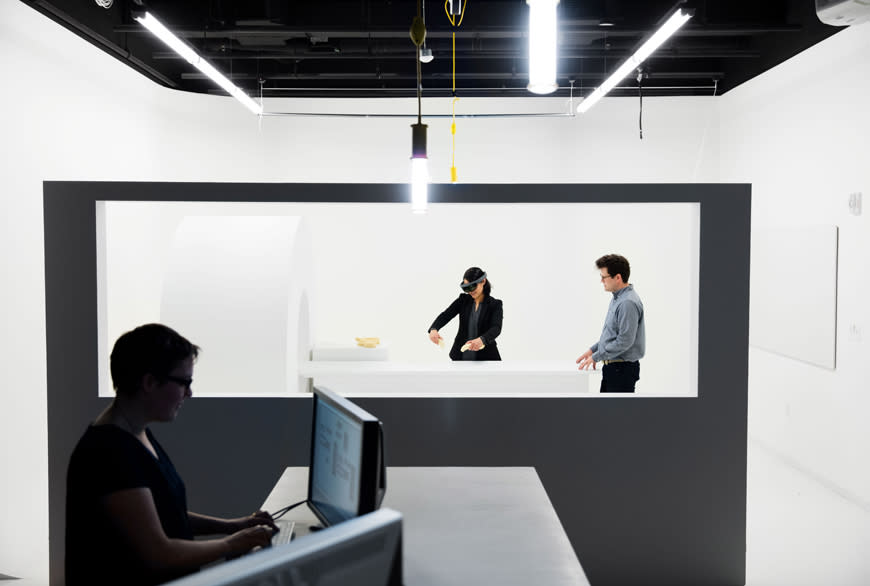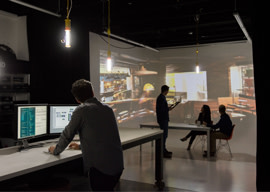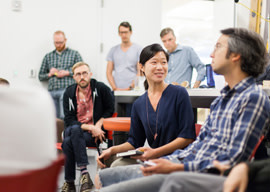
“Every technology goes through an age of discovery and an age of implementation,” writes Kai-Fu Lee, chairman and CEO of Sinovation Ventures and author of the volume, A.I. Superpowers: China, Silicon Valley, and the New World Order, in the New York Times. Lee suggests that AI innovation has gone through an era of visionary research in the U.S., which has now been eclipsed by the age of implementation, which is led by the ultra-fast Chinese.
The problem is, Lee’s paradigm is flawed. Innovation, AI or otherwise, doesn’t evolve from age to age; in fact, the barrier between visionary thinking and pragmatic implementation—for the practicing innovator—can be quite fluid. It often is.
How do we know this?
We work at a global innovation design firm whose tagline is The Future. Made Real.™ For over 30 years, we’ve helped clients envision and design new futures. Companies came to us to understand their clients on a human level—they didn’t want big data, but small- and medium-sized data; qualitative data—and then we used the insights from this work to figure out where their next S curve will come from, and how they can find it before the current one flattens out.
Whether it’s creating a new business model for the Chinese ride-hailing company UCAR, developing a quieter, more intuitive smart breast pump for the Italian firm, Medela, or prototyping a cool new digital wayfinding project for Southwest Airlines, we always bring both vision and implementation to our projects.
We have long understood that effective innovation needs to see the future and act—iteratively—in the present, to make relevant change. We call this process backcasting, and it involves defining an ideal future state, and then finding necessary mid-step changes that can push an organization in the right direction. In combining both visionary work and implementation, Backcasting goes a long way to refute Lee’s evolutionary thesis.
Fact is, backcasting seems a necessary tool for our time. As the velocity of our economy continues to rev higher, organizations that engage in both discovery and implementation, in an almost simultaneous fashion, will be those that will win the day… and the next six-thousand days after that. Today’s business models have a shorter and shorter expiration date. Because of this, thinking in terms of eras, relying on legacy business models or slowly accumulated assets, is a dangerous game.
We recently found ourselves a brand-new S curve. In March 2018, Continuum was acquired by EPAM, whose expertise is in scaling global product development and digital platform engineering. Continuum is now called EPAM Continuum, but what’s happening next isn’t just about rebranding. It’s about radically expanding the scope of what we can achieve for clients.
The time has come for us to do some backcasting our ourselves. What might the idea future state of EPAM Continuum be?
Truth is, we’ve been dreaming about going big for some time. Now, thanks to EPAM’s power and reach and profound engineering strength, we are willing this into existence. This partnership, we are confident, will allow us to create legitimate end-to-end solutions for all kinds of companies.
The thought of starting client work at the very beginning, with ethnographic interviews maturing into customer insights, with iterative, responsible prototyping and testing, and progressing all the way to large-scale implementation is a big deal. We look forward to working on this sort of innovation—much of which will surely involve artificial intelligence. We’re jazzed at the idea of taking a human-centered approach to AI and understand that this is serious and important work. Work that will have deep consequences for our economy and society.
We’re starting to work together on a number of projects (you’ll read more about them on our website as they progress). These, and our future collaborations, will be an even stronger marriage of visionary and implementation work. This seems to be a big, bold vision that Lee can applaud. Lee writes, about the U.S. and China: “we do know that each country can improve its odds of success by learning from the other’s strengths” and this seems absolutely true when applied to us and EPAM. Together we’ll make the future real—at scale.





